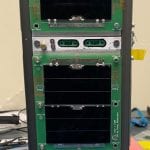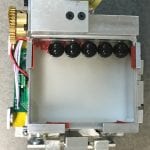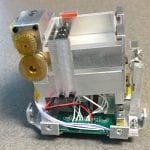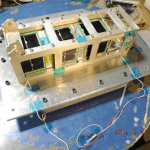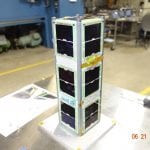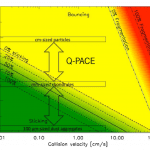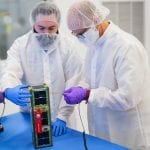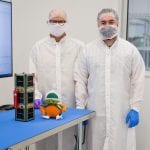In the very early stages of planet formation, dust grains trapped in a disk around the young star gently collide with each other, sticking and growing into bigger aggregates. Similarly, particles in planetary rings collide at very low relative velocities and form aggregates leading to many an observed features of Saturn’s rings for example. To better understand these low-velocity collisions and the growth of aggregates, microgravity experiments observing multi-particles systems are required. In particular, collision data for µm to cm-sized particles will help close the current gap in knowledge of how planetesimals are formed, as well as improve our understanding of the collisional evolution of planetary rings.
Q-PACE (CubeSat Particle Aggregation and Collision Experiment) is a 3U CubeSat that will observe a set of 0.1 mm to cm-sized particles colliding at the very low speeds made possible by its microgravity environment in orbit around the Earth. Q-PACE is scheduled for the next launch of the Virgin Orbit LauncherOne rocket, targeting before the end of 2020.
Q-PACE carries out its collision experiments in an Experiment Test Cell, or ETC, that is contained within the 3U body of the spacecraft (Figure 1). The ETC (Figures 2-3) is shaken in a controlled manner by tapping mechanisms in three directions to induce collisions between the particles and the walls of the ETC collision chamber. This then leads to the particles colliding amongst themselves. The particles are backlit, and the collisional evolution is captured by a small video camera for later transmission to Earth.

